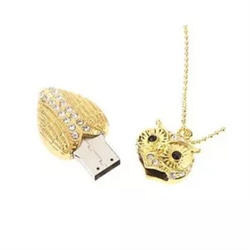U disk transmission method
Control transmission: Control transmission is two-way transmission, and the amount of data is usually relatively small. The USB system software is mainly used to query, configure and send general instructions to USB devices. The transfer method can include 8, 16, 32, and 64 bytes of data, depending on the USB device and the transfer rate. Control transmission is typically used for transmission between Endpoint 0 between the host computer and the USB peripheral.
Synchronous Isochronous transmission: Synchronous transmission provides a certain bandwidth and interval time (Latency). It is used for time-critical and fault-tolerant streaming data transmission, or for real-time applications that require a constant data transfer rate. For example, when implementing an Internet phone application for instant calls, it is a good choice to use the synchronous transmission mode. Synchronous data requires a certain bandwidth value and a certain maximum number of transmissions. For synchronous transmission, instant data transmission is more important than perfect accuracy and data integrity.
Interrupt mode transmission: Interrupt mode transmission is mainly used to periodically query whether the device has interrupted data to be transmitted. The structure of the device’s endpoint mode device determines its query frequency, ranging from 1ms to 255ms. This type of transmission is typically used in the transmission of small, scattered, and unpredictable data. Keyboards, joysticks, and mice fall into this category. The interrupt mode transmission is one-way and only input mode for the Host.
Mass Bulk transmission: It is mainly used to transmit and receive data in a large amount, and at the same time, when there is no bandwidth and interval time requirement, it is required to guarantee the transmission. Printers and scanners belong to this type. This type of equipment is suitable for very slow transmission and a large amount of delayed transmission and can wait until the transmission of all other types of data is completed before transmitting and receiving data.












How to use U disk
The U disk has a USB interface and is a USB device. If the operating system is Windows 2000 or higher or Apple’s system, plug the U disk directly into the USB port on the front panel or back of the case, and the system will automatically recognize it. If the system is 98, you need to install the U disk driver to use it. The driver can be found on the attached CD or on the manufacturer’s website.
When using the USB flash drive for the first time, the system will report: new hardware is found, and after a while, it will prompt: the new hardware has been installed and can be used (the USB flash drive that is frequently inserted has no prompt). Open “My Computer” and you will see an extra icon called “Removable Disk”. After this step, if you use the U disk in the future, you can plug it in and open “My Computer” directly. At this time, notice that in the lower right corner of the screen, there will be a small icon, which means a USB device. (U disk is one of the USB devices). Next, you can save and delete files on the U disk as usual. However, it should be noted that after the U disk is used, close all windows, especially the window about the U disk. Before correctly unplugging the U disk, right-click the USB device icon in the lower right corner, and then left-click “Safely Remove Hardware”. Press the “Stop” button, and then click “OK” in the pop-up window. When the prompt: “You can safely remove the drive now” appears in the lower right corner, you can unplug the U disk from the case.













